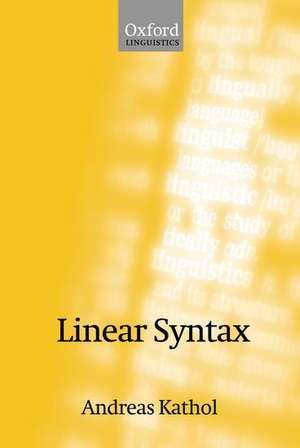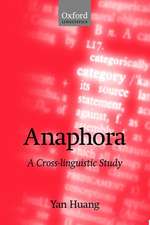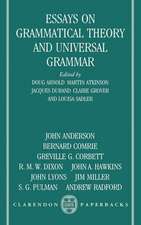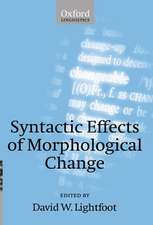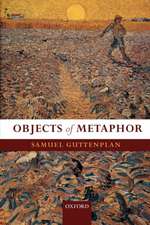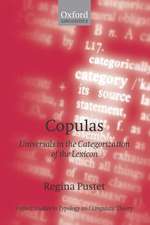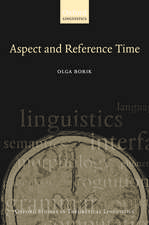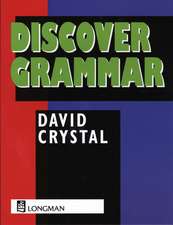Linear Syntax
Andreas Katholen Limba Engleză Paperback – 29 iul 2004
Preț: 169.09 lei
Preț vechi: 217.18 lei
-22% Nou
Puncte Express: 254
Preț estimativ în valută:
32.37€ • 35.17$ • 27.20£
32.37€ • 35.17$ • 27.20£
Carte tipărită la comandă
Livrare economică 10-16 aprilie
Preluare comenzi: 021 569.72.76
Specificații
ISBN-13: 9780198238720
ISBN-10: 019823872X
Pagini: 328
Ilustrații: line illustrations
Dimensiuni: 156 x 234 x 18 mm
Greutate: 0.5 kg
Editura: OUP OXFORD
Colecția OUP Oxford
Locul publicării:Oxford, United Kingdom
ISBN-10: 019823872X
Pagini: 328
Ilustrații: line illustrations
Dimensiuni: 156 x 234 x 18 mm
Greutate: 0.5 kg
Editura: OUP OXFORD
Colecția OUP Oxford
Locul publicării:Oxford, United Kingdom
Recenzii
... informative and thought-provoking ... The book represents a remarkable contribution to generative German syntax, and has made some significant innovations that have already had an impact on theoretical and computational research on other languages and language families.
An important contribution to the exploration of German(ic) syntax within the theoretical assumptions of HPSG (Head-driven Phrase Structure Grammar) ... the book builds a bridge of communication between different research camps and gives linguists without a Germanic background access to the classical insights of topological theory, whose merits, as we see, have come an exceptionally long way.
Most work in syntactic theory assumes a close relation between constituent structure and linear order and some of it assumes a very close relation. Breaking with this orthodoxy, Andreas Kathol argues in this book mainly on the basis of German data for a version of Head-driven Phrase Structure Grammar which recognizes a level of linear organization quite separate from constituent structure. He shows how this approach, which has something in common with traditional approaches to German syntax, permits interesting analyses both of the most familiar features of German syntax and of some that are less familiar. The book should be of interest to anyone interested in German but also to anyone concerned with the relation between constituent structure and linear order
This is the most impressive and comprehensive work on the syntax of verbs in German and Germanic since the seminal work of Evers and den Besten in the 1970s. All those who keep bibliographies of must-reads of the topic of verbal word order will have to add Kathol's book for the benefit of any future linguist who intends to work on the same subject.
An important contribution to the exploration of German(ic) syntax within the theoretical assumptions of HPSG (Head-driven Phrase Structure Grammar) ... the book builds a bridge of communication between different research camps and gives linguists without a Germanic background access to the classical insights of topological theory, whose merits, as we see, have come an exceptionally long way.
Most work in syntactic theory assumes a close relation between constituent structure and linear order and some of it assumes a very close relation. Breaking with this orthodoxy, Andreas Kathol argues in this book mainly on the basis of German data for a version of Head-driven Phrase Structure Grammar which recognizes a level of linear organization quite separate from constituent structure. He shows how this approach, which has something in common with traditional approaches to German syntax, permits interesting analyses both of the most familiar features of German syntax and of some that are less familiar. The book should be of interest to anyone interested in German but also to anyone concerned with the relation between constituent structure and linear order
This is the most impressive and comprehensive work on the syntax of verbs in German and Germanic since the seminal work of Evers and den Besten in the 1970s. All those who keep bibliographies of must-reads of the topic of verbal word order will have to add Kathol's book for the benefit of any future linguist who intends to work on the same subject.
Notă biografică
Andreas Kathol is Assistant Professor in the Department of Linguistics, University of California at Berkeley. He obtained his Doctorate at the Ohio State University (1995) and held a postdoctoral research fellowship at the University of Groningen (1995-6).
